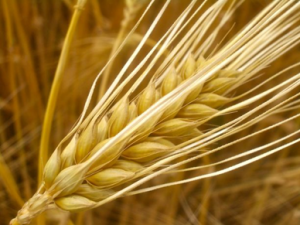Bacterial blight of rice is an important serious bacterial diseases of rice in many rice-growing regions, caused by Xanthomonas oryzae pv. oryzae (Xoo). The thiG gene from Xoo strain ZJ173, which is involved with thiazole moiety production in the thiamine biosynthesis pathway, is highly conserved among the members of Xanthomonas. The thiG deletion mutant displayed impaired virulence and growth in thiamine-free medium but maintained its normal growth rate in the rice tissues, indicating that the thiG gene is involved in Xoo virulence.
Rice blast fungus, Magnaporthe oryzae, is the most destructive pathogen in the rice-growing area. This fungus has a biotrophic phase early in infection and later switches to a necrotrophic lifestyle. During the biotrophic phase, the fungus competes with its host for nutrients and oxygen. Continuous uptake of oxygen is essential for successful establishment of blast disease of this pathogen. Here, we report transcriptional responses of the fungus to oxygen limitation. Transcriptome analysis using RNA-Seq identified that 1,047 genes were up-regulated in response to hypoxia.
The cereal rust fungi are destructive pathogens that affect grain production worldwide. Although the genomic and transcript sequences for three Puccinia species that attack wheat have been released, the functions of large repertories of genes from Puccinia still need to be addressed to understand the infection process of these obligate parasites. Host-induced gene silencing (HIGS) has emerged a useful tool to examine the importance of rust fungus genes while growing within host plants.
Acid soil is a serious limitation to crop production all over the world. Toxic aluminium (Al) cations in acid soil inhibit root growth and reduce yield. Although a gene tolerant to acid soil has been identified, it has not been used in malting barley breeding, which is partly due to the acid soil tolerance gene being linked to unfavorable malting quality traits.
Parent-specific gene expression (PSGE) is little known outside of mammals and plants. PSGE occurs when the expression level of a gene depends on whether an allele was inherited from the mother or the father. Kin selection theory predicts that there should be extensive PSGE in social insects because social insect parents can gain inclusive fitness benefits by silencing parental alleles in female offspring. We searched for evidence of PSGE in honey bees using transcriptomes from reciprocal crosses between European and Africanized strains.
Metabolites of the mevalonate (MVA) pathway play essential roles in the regulation of growth and development in many organisms. In this study, we demonstrate that a key regulatory enzyme of the MVA pathway is directly involved in the signaling pathway that transduces endosymbiotic microbial signals in Medicago truncatula. Furthermore, we show that exogenous MVA application is sufficient to activate this transduction pathway. The use of mutants in the signaling pathway and a heterologous expression system provides evidence that the MVA pathway is a missing link between the initial perception of microbial signals at the host plasma membrane and the regulation of symbiotic gene expression in the nucleus.
Flowering plants attract pollinators in part by emitting volatile scents from their petals. This emission of scent is highly regulated, and is often restricted to a specific portion of the day. Although the biochemical pathways of scent production are well characterized, little is known of their transcriptional regulation. Here we describe a direct molecular link between the circadian clock and floral volatile emissions.
Gibberellic acid (GA; or gibberellin) affects the development of floral organs, especially anthers and pollen, and perturbation of development of male floral organs can cause sterility. Many studies of GA signaling have concentrated on anther development, but the effect of GA on grain production remains to be examined.
Maize (Zea mays L.) is among the most important grains contributing to global food security. Eighty years of genetic gain for yield of maize under both favorable and unfavorable stress-prone drought conditions have been documented for the US Corn Belt, yet maize remains vulnerable to drought conditions, especially at the critical developmental stage of flowering. Optimum AQUAmax (Dupont Pioneer) maize hybrids were developed for increased grain yield under drought and favorable conditions in the US Corn Belt.
Peroxisomes play important roles in metabolisms of eukaryotes and infection of plant fungal pathogens. These organelles proliferate by de novo formation or division in response to environmental stimulation. Although the assembly of peroxisomes was documented in fungal pathogens, their division and its relationship to pathogenicity remain obscure. In present work, we analyzed the roles of three Pex11 family members in peroxisomal division and pathogenicity of the rice blast fungus Magnaporthe oryzae.


 Curently online :
Curently online :
 Total visitors :
Total visitors :









